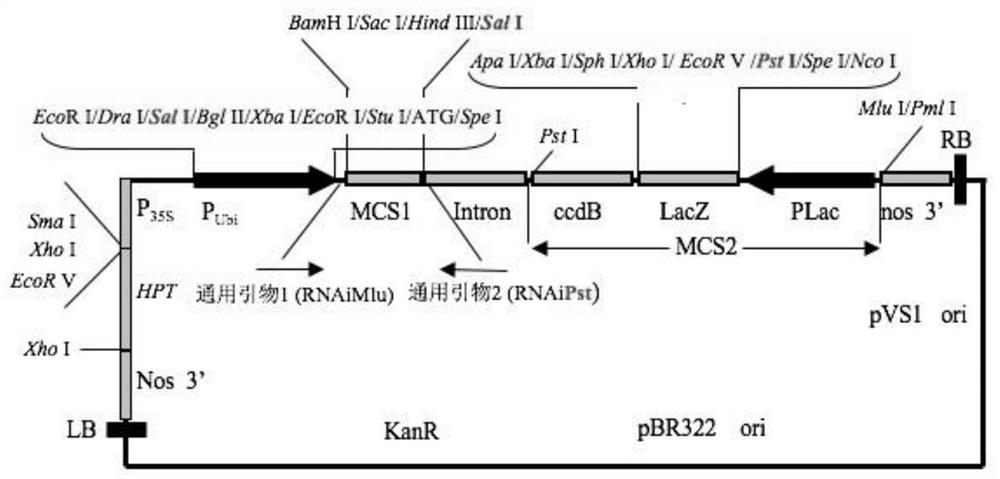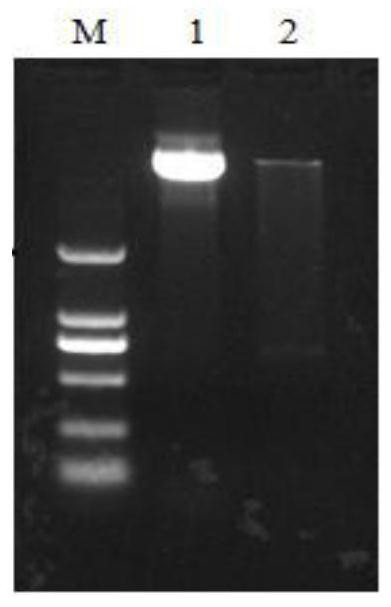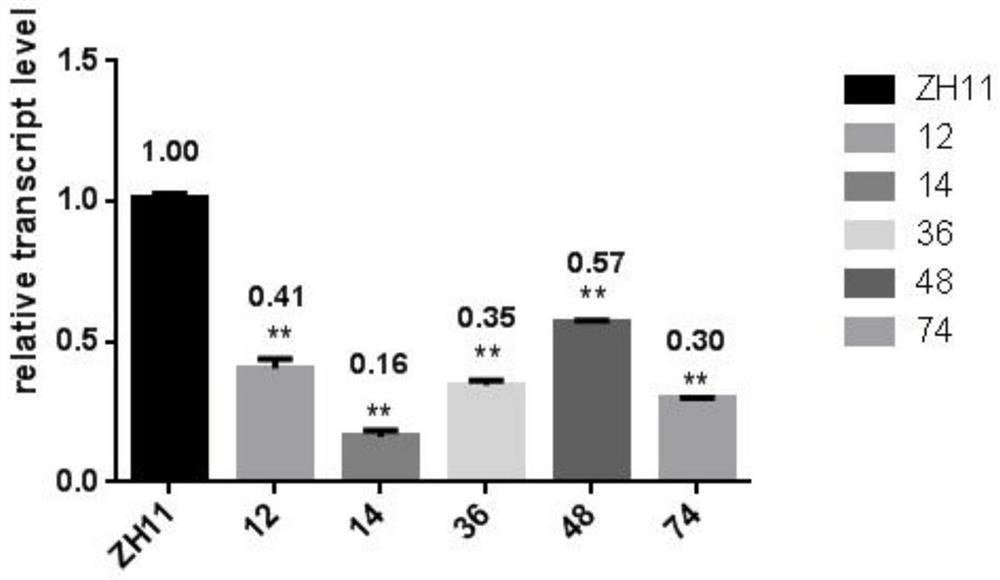Application of 0scpy and its encoded protein in rice seeding
A technique for encoding protein and rice, applied to the field of application of an orphan gene Oscpy in rice and its encoded protein in rice seeding
- Summary
- Abstract
- Description
- Claims
- Application Information
AI Technical Summary
Problems solved by technology
Method used
Image
Examples
Embodiment 1
[0068] Embodiment 1: Construction and genetic transformation of RNA interference carrier
[0069] (1) Obtaining the forward interference fragment: Extract the total RNA of the young panicle of Zhonghua No. 11, reverse it into cDNA, and use the designed primer pair 3 according to the Oscpy gene sequence: SEQ ID NO.3CPY-SIF22: 5'-CGCGGATCCTCCATCGTGGAGCCGGAGAA-3 ' (the underline is the restriction site of BamHI) and SEQ ID NO.4CPY-SIR22: 5'-GCCTAAGCTTCCCTGTAGAAACCTCCTGCTCCAG-3' (the underline is the restriction site of HindIII). The positive interference fragment (SEQID NO.5) of Oscpy was amplified by RT-PCR, and was used for the construction of the interference vector after sequencing verification.
[0070] (2) Construction of RNA interference vector: forward interference fragment (SEQ ID NO.5) and pYL vector (see figure 1 ) were subjected to double enzyme digestion, purification, and recovery with BamH I and Hind III enzymes, and then ligated with T4 DNase. The ligated product...
Embodiment 2
[0082] Example 2 Detection of Transgenic Positive Rice Plants and Obtaining of Oscpy Expression Down-regulated Plants
[0083] After the DNA of transgenic rice leaves was extracted by CTAB method, hygromycin phosphotransferase gene-specific primers (SEQ ID NO.9:5'-CTGAACTCACCGCGACGTCTGTC-3'; SEQ ID NO.10:5'-TAGCGCGTCTGCTGCTCCATACA-3' ) The rice that was amplified positive by PCR was determined to be the transgenic positive plant of the T0 generation; using the fluorescent quantitative PCR method, with Oscpy gene-specific primers SEQ ID NO.11:5'-AGGGCACTGATGCTAGAGGA-3'; SEQ ID NO.12:5 '-CTCATTGGCGCCGGATTTTC-3', using rice OsActin as an internal reference gene, its primer sequence is SEQ ID NO.13:5'-ACCTTCAACACCCCTGCTAT-3' and SEQ ID NO.14:5'-CACCATCACCAGTCC AAC-3' to detect the down-regulated expression of Oscpy , and obtain Oscpy gene down-regulated expression RNAi rice plants and T-DNA insertion mutant plants, such as image 3 As shown, compared with wild-type Zhonghua 11, w...
Embodiment 3
[0084] The observation of the growth of wild type and transgenic strain coleoptile under the condition of embodiment 3 flooding
[0085] Select mature and plump wild type Zhonghua 11 (ZH11), mutant (cpy), RNA interference (RNAi), 200 grains each, and first wet the rice seeds with sufficient distilled water to make the surface of the seeds hydrophilic. Put these wet seeds into a glass bottle marked with the experiment date and seed name, add an equal volume and sufficient amount of distilled water to germinate the seeds under completely submerged conditions, put them into day / night for 12 hours, and the temperature is 32°C during the day Germinate and cultivate in an incubator at 28°C in the dark, with a relative humidity of 60%, and a light intensity of 3000Lx. Replace the distilled water at the same temperature under the conditions of rice every 8 hours, and clean the seed metabolites in the glass bottle to avoid the poisoning of metabolites. Affect the normal growth of seeds...
PUM
 Login to View More
Login to View More Abstract
Description
Claims
Application Information
 Login to View More
Login to View More - R&D
- Intellectual Property
- Life Sciences
- Materials
- Tech Scout
- Unparalleled Data Quality
- Higher Quality Content
- 60% Fewer Hallucinations
Browse by: Latest US Patents, China's latest patents, Technical Efficacy Thesaurus, Application Domain, Technology Topic, Popular Technical Reports.
© 2025 PatSnap. All rights reserved.Legal|Privacy policy|Modern Slavery Act Transparency Statement|Sitemap|About US| Contact US: help@patsnap.com



